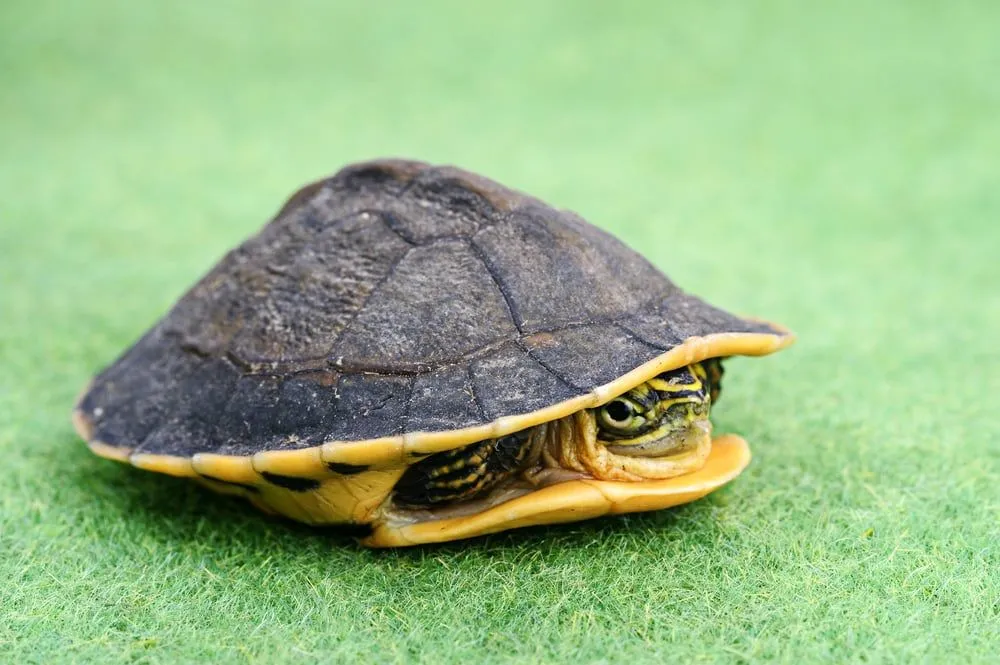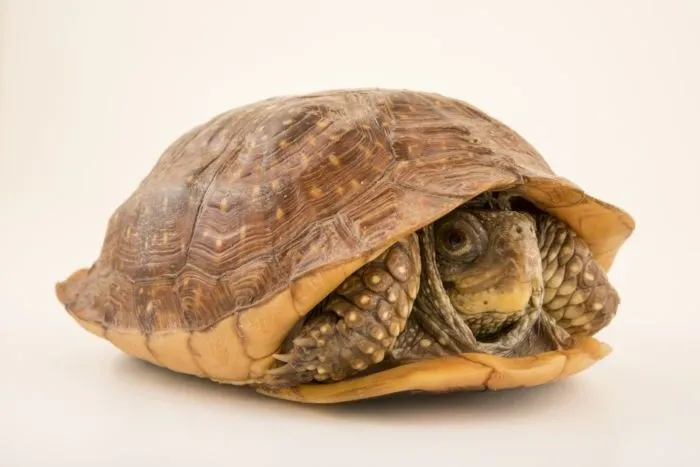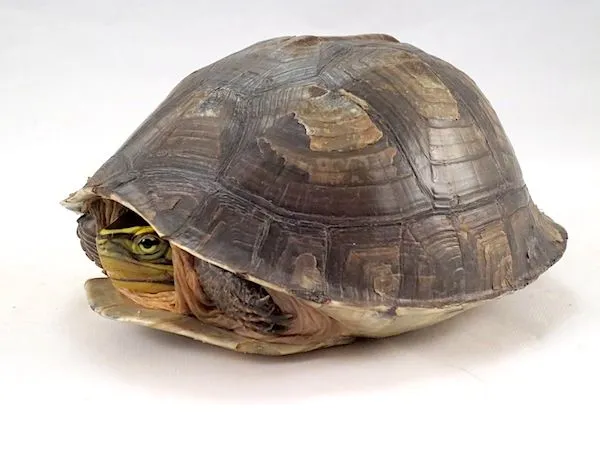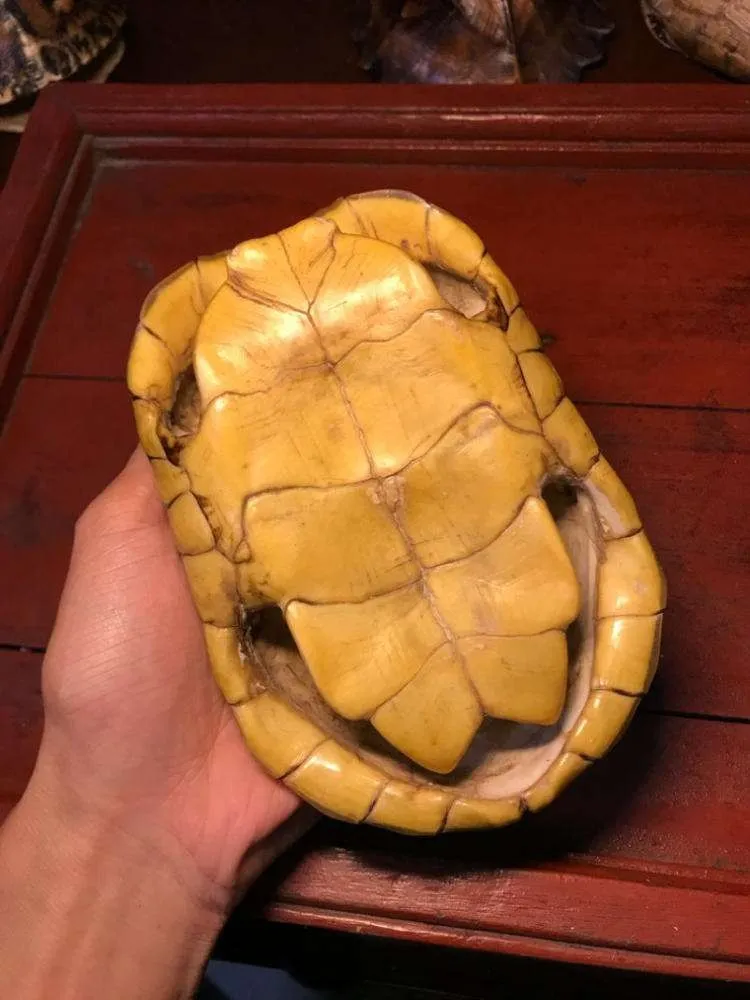When I first studied tortoise and turtle biology, as turtle without its shell I realized how often people imagine the shell as a removable part, almost like clothing. Yet, in practical observation, the shape, patterns, and very homes of these creatures are not separable. The body and spine fuse into a living system where detachment becomes instantly deadly.
In my own encounters, I’ve seen how protection, resilience against weather, and defense from predators depend on that singular anatomy. Any injury that resembles a fracture can trigger infection and eventual death. For me, it’s not just theory; working with their skeletal system underlines how keratin layering makes them truly inseparable, a fact most forget despite the obvious gist of their structure.

Shell, A Suit of Armor / Protection & Anatomy
A researcher quickly notices how turtles and tortoises rely on their shell for protection and survival. The land-dwelling species carry big, bone-hard, high-arched armor to withstand weather and potential predators. In contrast, the sea species evolved slick, less-rounded forms that allow them to swim in a streamlined way, proving how diverse anatomy supports different ecological paths.
From a skeletal view, the skeleton, exoskeleton, ribs, and spine integrate so tightly it is simply impossible to separate their bodies. Each covered framework forms a special shell from ribs, creating bony, cartilaginous, or flexible supportive structure. The spine and fused bony plates beneath skin interlock, generating a hard shell layered with scutes and horny plates. Distinct divisions like carapace, plastron, top, and bottom complete the anatomical logic.
How Do Turtle Shells Grow / Development
When hatchlings are born, their shells already exist, though softer than adults. As bodies grow proportionally, these shells provide some protection. I’ve witnessed how the surface begins to harden while scutes overlap, becoming bigger and stronger over time.
Interestingly, the outer layers of the carapace have nerve endings, making the shell function almost like skin. While tortoises, unlike other reptiles such as snakes, frogs, or lobsters, never molt, shed, or regrow, their scutes follow skeletal system growth. Turtles, however, sometimes shed scutes, confirming that the shell grows as the turtle grows, with carapace and plastron adapting throughout.

Would It Hurt / Lethality of Shell Removal
From my rehab experience, I know a tortoise or turtle feels excruciating pain when the shell is broken—it’s like a human knee shattering. Holes due to lack of calcium, sunlight, or vitamin D deficiency weaken growth, leaving them vulnerable to diseases. Because the bone tissue is living, any compromise opens paths for bacterial, fungal, and viral infections that destabilize entire living systems.
Still, a shell may heal with treatment, though the evolutionary story is deeper. These animals, among the oldest on earth, show resistance, intelligence, and capacity to thrive for millions of years. Without a shell, the turtle spine and physiology collapse—removal is instantly deadly. Even minor injury or fracture can bring infection and death. Unlike a hermit crab or cartoon turtle, their skeletal system is wholly inseparable.
Ancient & Evolutionary Perspectives (Shell-less ancestors)
Studying fossils reveals how species of turtle shaped the family tree. The shell-less early turtle Eorhynchochelys sinensis, from 228 million years, had wide ribs but lacked a full shell, though it carried a toothless beak. This hints at mosaic evolution, where traits were evolving at different rates, not in perfect order.
Later, the ancestor modern-day turtles Pappochelys rosinae, from 240 million years, appeared with partial shell, whiplike tail, and broad trunk ribs plus belly armor. Such fossils fill the evolutionary gap, linking precursors like Eunotosaurus to later shelled turtles, offering a clearer paleontological narrative.

Softshell Turtles as “Shell-less” Lookalikes
When I first handled softshell turtles, I understood why people imagine them as truly shell-less. Their look can mislead, making some misinterpret appearances. Yet, their skeletal elements remain intact.
Many species carry flexible, reduced shells, still fused to bodies. Such adaptations prove that no turtle exists without a shell, but variations like these create fascinating diversity in reptilian design.
FAQs: Turtle Without Its Shell
Can a turtle live without its shell?
No. A turtle’s shell is part of its spine, ribs, and skeletal system. Without it, the turtle would die instantly because vital organs are exposed and protection is gone.
What happens if a turtle loses its shell?
A turtle cannot survive shell removal. The shell contains nerves, bones, and blood vessels. Removing it would cause extreme pain, infection, and death.
Is a turtle without a shell like a snail without a shell?
No. Unlike snails or hermit crabs, turtles do not move in and out of shells. Their anatomy is permanently fused with the shell.

Do turtles feel pain through their shells?
Yes. The carapace and plastron have nerve endings, meaning turtles feel touch, pressure, or injury on their shells just like skin.
How does a turtle’s shell grow?
Turtles are born with their shells. As they grow, the scutes expand, overlap, and harden. The carapace and plastron enlarge proportionally with the turtle’s body.
Can turtles shed their shells?
No. A turtle cannot shed its shell. However, aquatic turtles sometimes shed thin outer scutes, while tortoises do not.
What is a turtle shell made of?
The shell is made of bone, fused ribs, spine, and external scutes of keratin. It has two main parts: the carapace (top) and plastron (bottom).
What does a turtle look like without its shell?
It’s a gruesome sight. A turtle without its shell would expose organs, bones, and tissues. In reality, such a turtle cannot survive.
Why are shells important for turtles?
Shells provide protection from predators, weather, and environmental risks. They also support body structure and survival across habitats.
Can a cracked turtle shell heal?
Yes, small cracks may heal with treatment and veterinary care. Since shells are living bone tissue, they can regenerate, though severe fractures are often fatal.
Do turtles feel safe inside their shells?
Yes. The shell works like natural armor. For millions of years, turtles and tortoises evolved to rely on this defense mechanism.
Are there turtles that look shell-less?
Yes. Softshell turtles appear shell-less because of their flat, flexible, and reduced shells. But they still have skeletal shells fused to their bodies.
Did turtles always have shells?
No. Fossil records like Eorhynchochelys sinensis and Pappochelys rosinae show ancient turtles without full shells, proving shells evolved gradually.
How old is the turtle shell evolution?
Over 228–240 million years. Fossils reveal that early turtles developed wide ribs and belly armor before evolving the modern hard shell.
Why can’t turtles “come out” of their shells like cartoons show?
Because the shell is their skeleton. Removing it would mean removing the turtle’s body itself, unlike cartoon turtles which show false independence.
Is it painful for turtles when barnacles attach to their shells?
Yes, barnacle infestations can cause pain, infections, and restrict movement. Wildlife care often involves careful removal.
Do all turtles have the same type of shell?
No. Tortoises have high-arched, bone-hard shells for land, while sea turtles have streamlined, slick shells to swim efficiently.
Can turtles survive injuries to their shells?
Minor fractures or holes from calcium or vitamin D deficiencies may heal. Severe injuries often require urgent care to prevent bacterial, fungal, or viral infections.
How do turtles sense their environment through their shells?
They sense pressure, vibration, and even temperature changes through nerve endings in their shells.
Are there animals similar to turtles without shells?
Not really. Only fossils of precursors like Eunotosaurus or living softshell turtles show shell variations. No modern turtle survives without one.
Why do people confuse softshell turtles with shell-less turtles?
Because softshells have thin, flat, and flexible shells, many think they lack one. But skeletal fusion proves they are not shell-less.
Can a turtle survive if part of its shell is missing?
Survival depends on severity. Small injuries may heal, but missing sections expose vital organs, usually leading to death without immediate treatment.
How many bones are in a turtle shell?
Over 50 bones including the ribs and spine fuse to form the shell, making it an inseparable skeletal structure.
Why is the turtle shell considered an evolutionary success?
Because it allowed turtles to thrive for millions of years, adapt to land and water, and survive predators with unmatched armor.
Can turtles feel temperature through their shells?
Yes. The nerve endings in the shell allow turtles to sense changes in heat and cold, influencing where they bask or hide.
Is a turtle shell like human nails or bones?
It is both. The shell is bone fused with the spine and ribs, but the outer layer is keratin, similar to human nails.
Why do people think turtles can crawl out of their shells?
Cartoons, folklore, and misinterpretation of hermit crabs created this myth. In reality, turtles are inseparable from their shells.
Can turtles survive shell damage in the wild?
Usually no. Without veterinary treatment, wild turtles with cracked or broken shells often die from infections or predation.
Are turtle shells waterproof?
Yes. The shell acts as a barrier, though aquatic turtles still absorb small amounts of water through their bodies.
Can turtles repair their shells naturally?
Minor cracks may slowly calcify and heal, but major damage requires human care to stabilize.
Do turtles use their shells for camouflage?
Yes. The patterns, colors, and shapes of shells often blend into environments, protecting them from predators.
Are there cultural myths about turtles without shells?
Yes. Some ancient myths compare a shell-less turtle to weakness or loss of identity, symbolizing vulnerability.
How does diet affect a turtle’s shell?
Lack of calcium and vitamin D3 leads to soft, deformed, or weak shells, making turtles prone to injuries.
What role does sunlight play in shell health?
UVB sunlight helps turtles produce vitamin D, which is crucial for calcium absorption and shell strength.
Can turtles die if their shell gets too thin?
Yes. Thin shells from poor nutrition or disease expose organs and leave turtles defenseless against predators.
Do different turtle species have different shell textures?
Yes. Some are rough and domed (tortoises), others smooth and flat (sea turtles), while softshells are leathery.
What would happen if evolution skipped the shell?
Without shells, turtles would not have survived millions of years of predators, making them unlikely to exist today.
Why are turtle shells considered “living armor”?
Because they are made of living bone tissue, connected to the turtle’s circulatory and nervous systems.
Can turtles feel if you tap on their shells?
Yes. They can sense tapping, scratching, or pressure due to nerve endings under the scutes.
Are turtle shells sensitive to infections?
Yes. Open wounds or cracks easily allow fungal, bacterial, or viral infections that can spread to the bloodstream.
Can turtles be born without shells?
No. All turtles are born with shells. Rare deformities occur, but a truly shell-less turtle cannot survive.
Are turtle shells stronger than human bones?
Yes. Turtle shells have a unique structure combining bone and keratin, giving them remarkable impact resistance.
Do turtles grow new shells if one is damaged?
No. They cannot grow a new shell, but existing shells can partially heal if treated.
How do scientists study ancient turtles without shells?
By analyzing fossils of early species like Eorhynchochelys or Pappochelys, paleontologists trace shell evolution step by step.